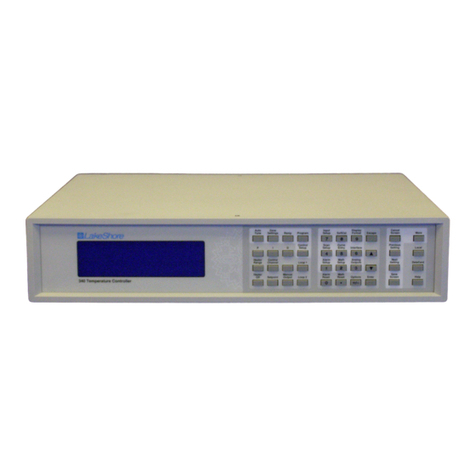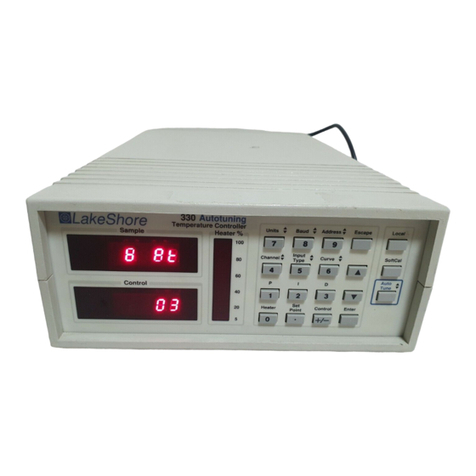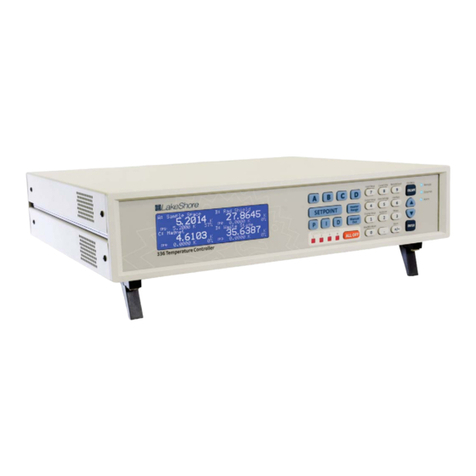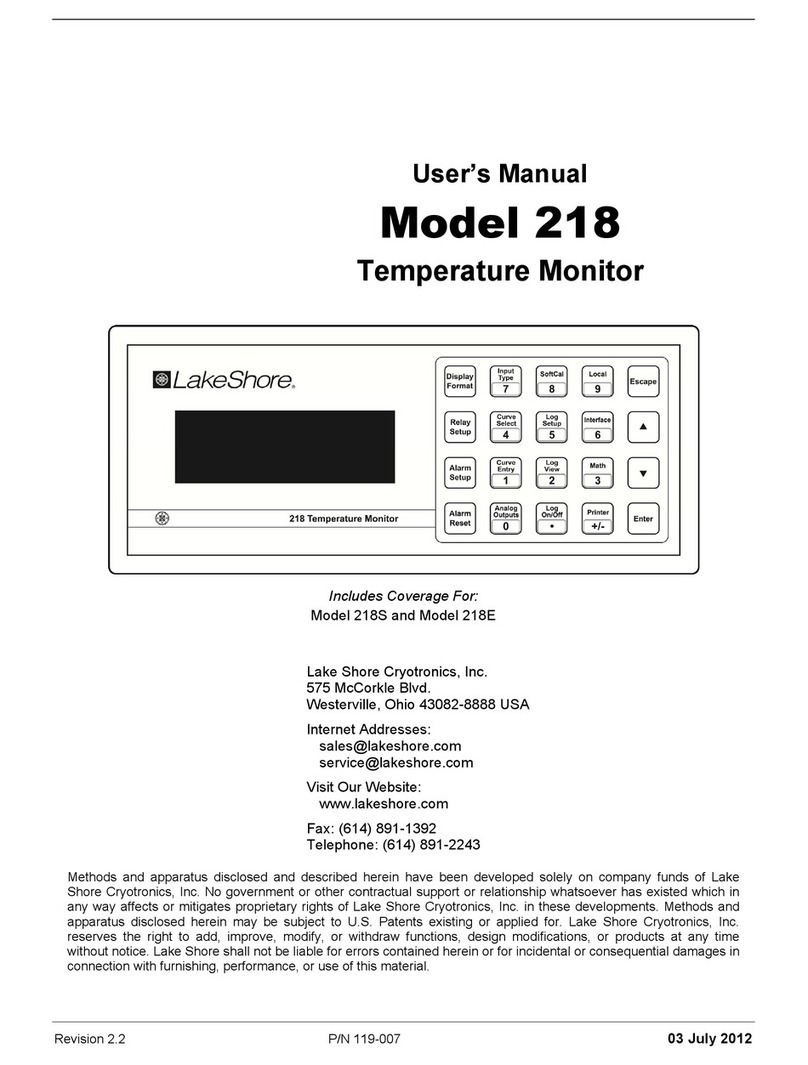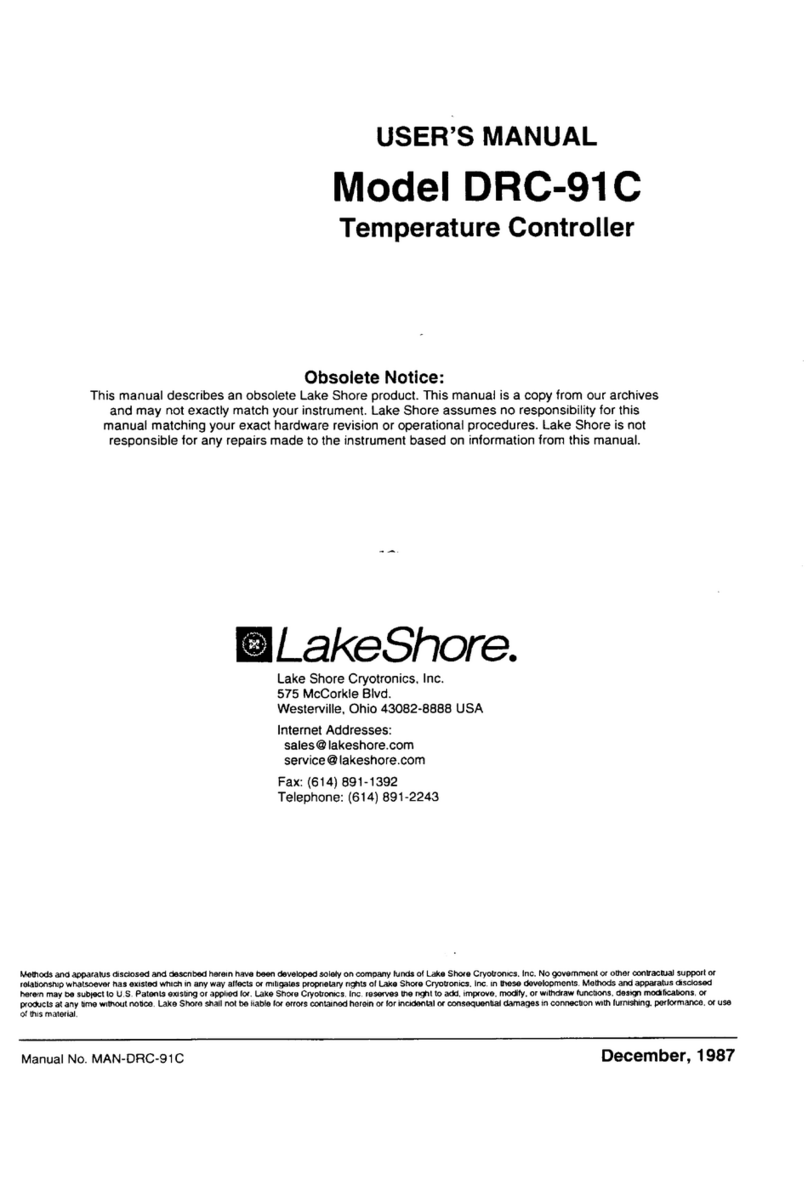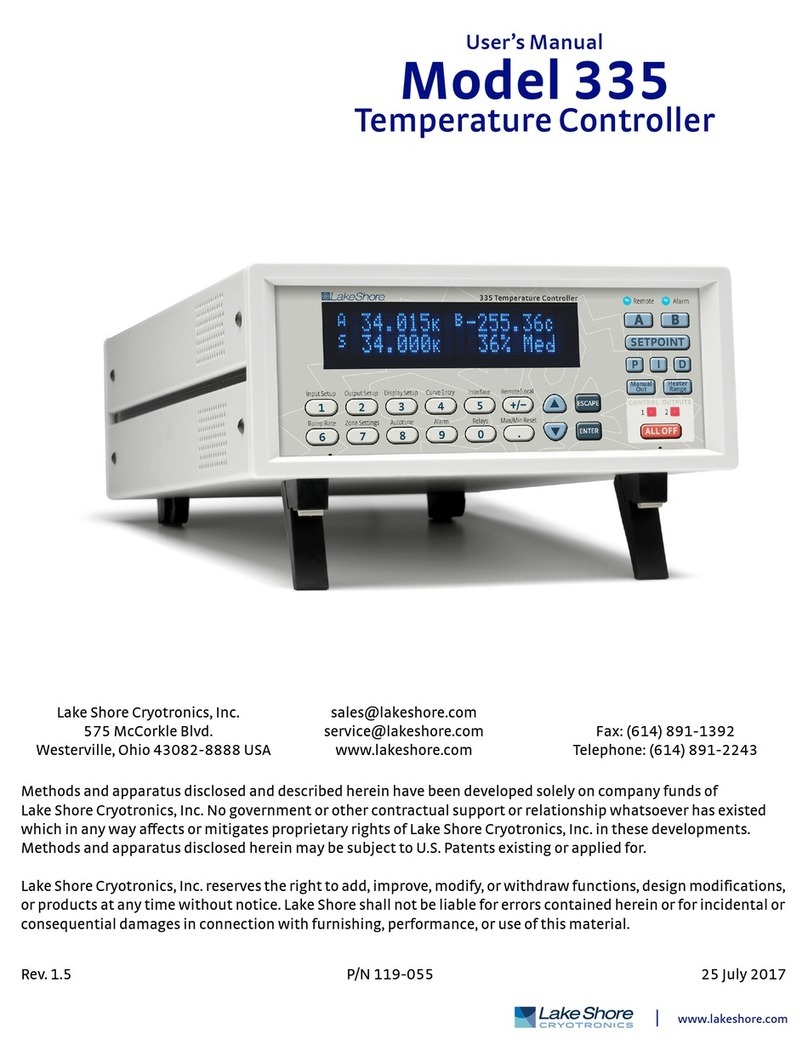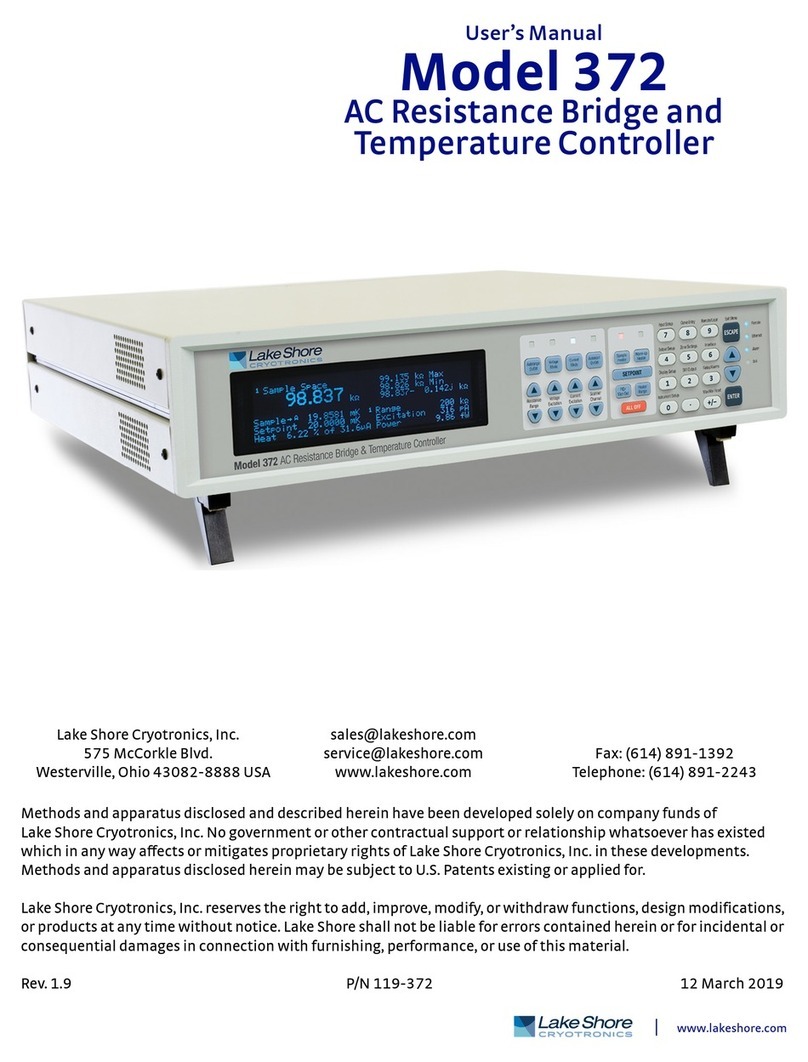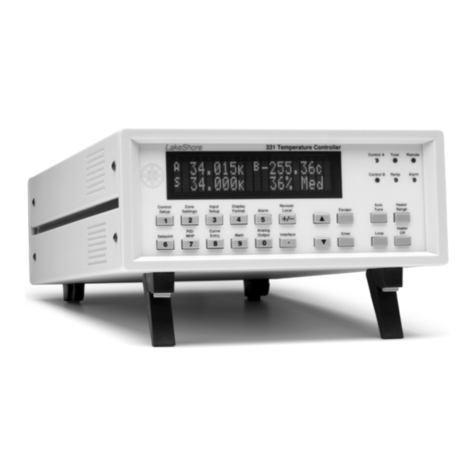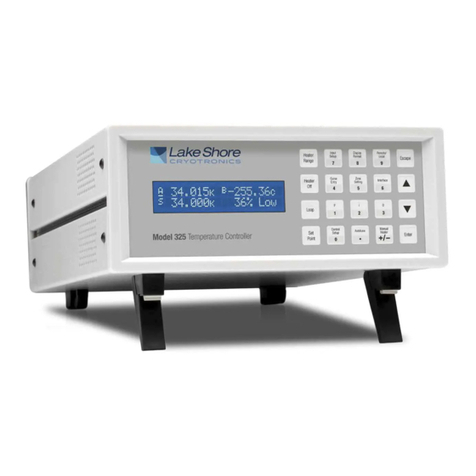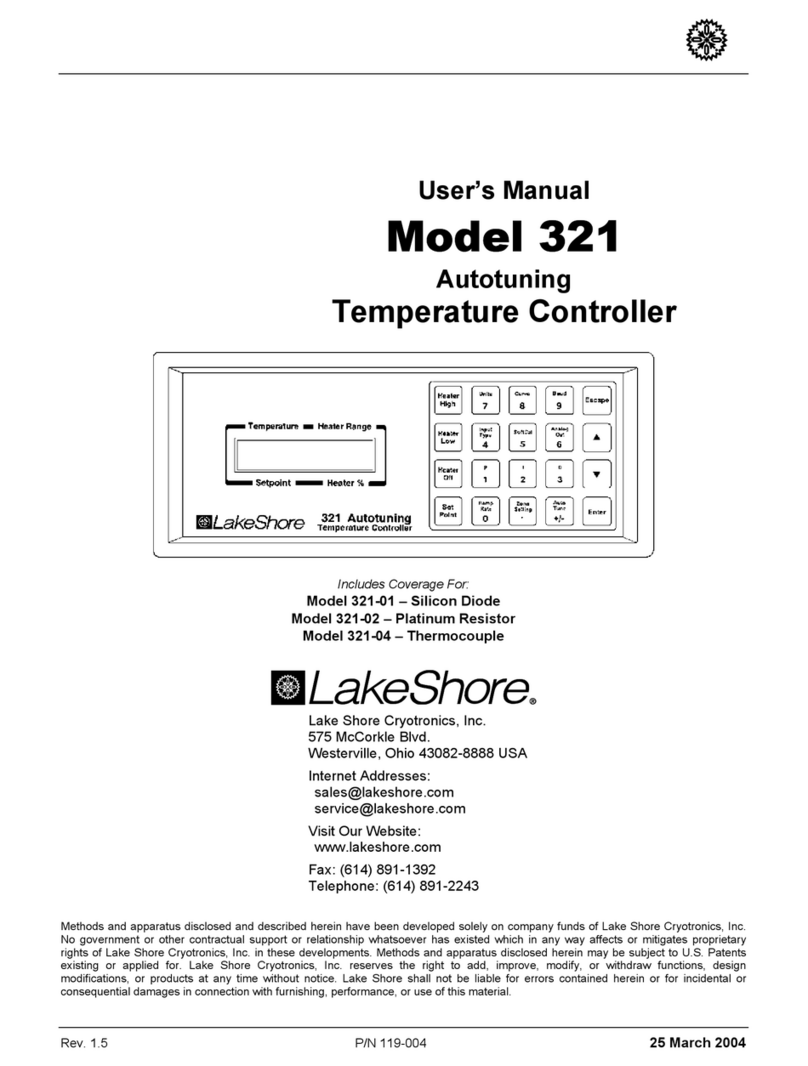
section
I
Model
805
0.03K.
Above
28K,
system accuracy
gradually moderates to a typical
value of
±75mK
above
40K.
See the
Lake Shore Cryotronics, Inc. Low
Temperature Calibration Service
brochure for additional discussion
of calibration accuracy.
The
805
display uses digital
filtering which averages up to ten
temperature readings. This reading
mode eliminates noise within the
cryogenic system analogous to
averaging with a digital voltmeter.
This algorithm can
be
deselected
(bypassed) by switch
2
of the
SENSOR ID dip switch on the back
panel for a given input if the user
prefers not to average readings.
A
decimal point at the upper left of
the display indicates that averag-
ing
is
on.
The Model
805
can also be used with
the optional input conversion
modules
(-6)
which allow either
input to be converted to handle
either the TG-120 series diodes (or
any diode with a
0
to
6
volt
output), or positive temperature
coefficient metallic resistors.,
i.e., platinum
(-P2
or
-P3)
or
rhodium-iron
(-R1)
resistors. The
DIN curve is standard within the
instrument and
is
called up
automatically unless a precision
option is present for the platinum
resistor. The accuracy of the
reading
is
dictated by the sensor
and
its conformity to the DIN
curve. The tolerance on these
devices
is
given on the technical
data sheet for the Lake Shore
PT-
100
series sensors. The combined
accuracy of the instrument and a
calibrated resistor with a preci-
sion option is on the order
of
40mK
over the useful range of the sensor
(above
40K
for the platinum). Note
that a precision option
is
required
for a rhodium-iron or a
TG-120
to
read correctly in temperature.
These input conversion modules are
easily installed by the user; thus,
1-2
units can
be
modified to satisfy
changing requirements.
The ample memory space provided in
the
805
allows several response
curves to
be
stored in one instru-
ment. Depending on the complexity
of the curves, up to ten can be
programmed into the unit by Lake
Shore. The
SENSOR
ID switches are
used to select which particular
sensor response curve is to
be
used
with each input. Thus, the user
is
able to make sensor changes at will
even when different response curves
are required.
The data for calibrated sensors can
be
stored within the instrument by
means of the
8001
Precision option.
Each curve can contain up to
99
sensor unit-temperature data
points. With the standard preci-
sion option format, which consists
of
31
data points and a
20
charac-
ter information line, up to ten
curves can be stored in the unit.
See Section
3-3
for more descrip-
tion.
Although voltage (resistance)-
temperature data points are stored
as a table, interpolation within
the instrument results in the
equivalent of a high order polyno-
mial calculation in the converting
of the input voltage (or resis-
tance) to temperature. This is
done by means of a proprietary
algorithm developed at Lake Shore
Cryotronics, Inc.
The control temperature set-point
selection is made via thumbwheel
switches on the front panel of the
instrument.
The
set-point switch-
es, which provide a continuous
indication
of
the set-point value,
enable the user to quickly and
easily determine whether his system
is at control temperature. The
set-point
is
in the same units as
is the Display sensor (kelvin,
Celsius, fahrenheit, or volts
[ohms])
